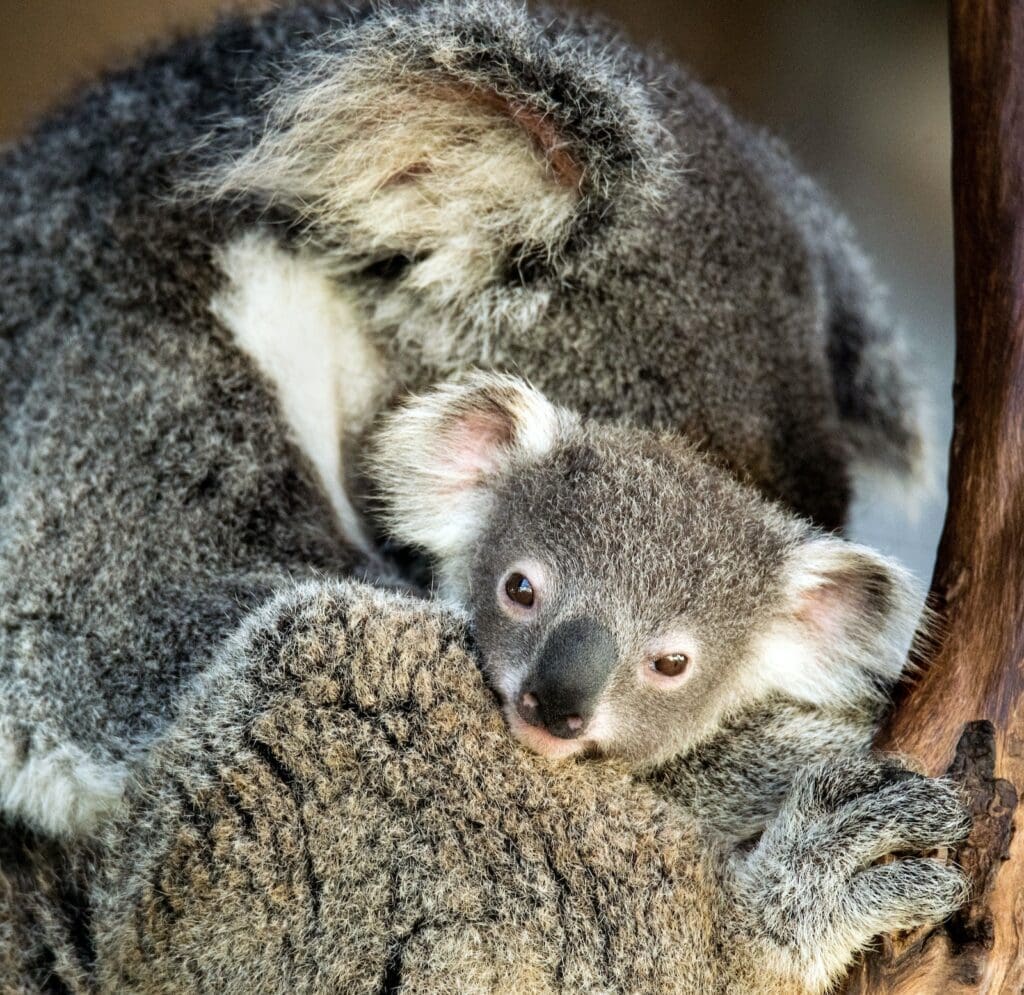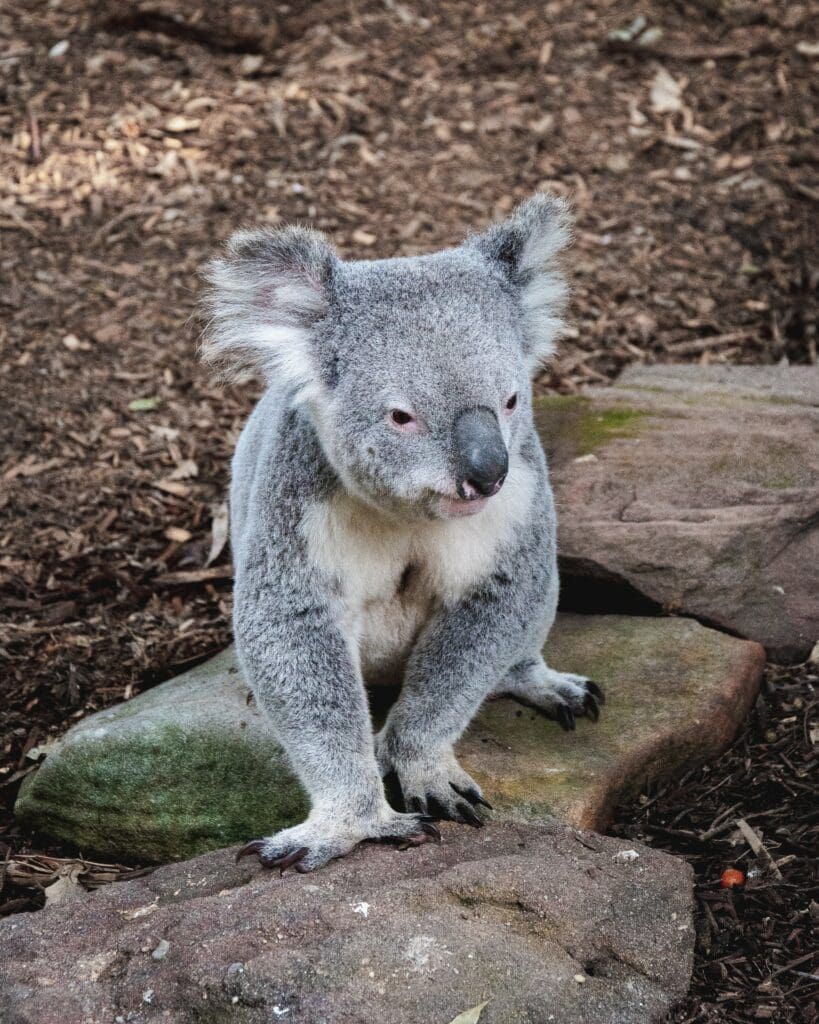
Learn About These Adorable Australian Marsupials
Koalas are one of Australia’s most iconic animals, known for their adorable appearance and laid-back lifestyle. These marsupials spend most of their lives sleeping and eating eucalyptus leaves, but there is much more to them than meets the eye. In this article, we will explore 10 fun facts about koalas that will give you a new appreciation for these fascinating creatures.
First and foremost, it’s important to note that koalas are not bears. Despite their nickname of “koala bear,” they are actually marsupials, which means they carry their young in a pouch. In fact, koalas are the only surviving member of the family Phascolarctidae, making them a unique and special part of Australia’s wildlife.
Another interesting fact about koalas is that they have a highly specialized diet. Eucalyptus leaves make up almost their entire diet, and they are able to digest the toxic compounds in the leaves thanks to a special digestive system. Koalas also have a low metabolic rate, which means they don’t need to eat as much as other animals their size. These adaptations have allowed koalas to thrive in their natural habitat and become one of Australia’s most beloved animals.
Koala Basics
Scientific Classification
The koala, or Phascolarctos cinereus, is a marsupial native to Australia. It is a member of the family Phascolarctidae and is closely related to wombats. Koalas are arboreal, meaning they live in trees, and are primarily found in the eucalyptus forests of eastern Australia.
Physical Characteristics
Koalas are known for their distinctive appearance. They have thick, grey fur with a cream-colored chest, and large, round ears. They also have strong, clawed feet that are perfect for gripping onto tree branches. Adult koalas measure about 60 to 85cm long and weigh about 14kg.
Average Life Span
In the wild, koalas have an average life span of around 10 to 15 years. However, koalas in captivity can live much longer, up to 20 years or more.
Overall, koalas are fascinating creatures with unique physical characteristics and an interesting scientific classification.
Koala Habitat
Koalas are marsupials that are found in the eucalyptus forests of eastern Australia. They are known for their love of eucalyptus leaves, which make up almost their entire diet. Koalas are arboreal and spend most of their time in trees, where they sleep, eat, and socialize.
Geographical Distribution
Koalas are native to Australia, where they are found in the southeast of the country. They are most commonly found in the eastern states of Queensland, New South Wales, Victoria, and South Australia. The exact range of the koala is difficult to determine, as they are not evenly distributed throughout their habitat.
Impact of Climate Change
Climate change is a significant threat to koalas and their habitat. Rising temperatures and changes in rainfall patterns can affect the growth and quality of eucalyptus trees, which are the primary food source for koalas. In addition, bushfires, which are becoming more frequent and intense due to climate change, can destroy large areas of koala habitat.
Habitat loss is also a significant threat to koalas. As human populations expand and urbanization increases, koala habitat is being destroyed at an alarming rate. The Australian government has recognized the importance of protecting koala habitat and has implemented measures to protect and restore koala habitat. However, more needs to be done to ensure the survival of this iconic species.
In conclusion, koalas are fascinating animals that are uniquely adapted to life in the eucalyptus forests of eastern Australia. Their habitat is under threat from climate change and habitat loss, but efforts are being made to protect and restore their habitat.
Koala Diet
Koalas are known for their unique diet, which consists solely of eucalyptus leaves. These furry marsupials are picky eaters and will only consume certain species of eucalyptus trees. They have a preference for the leaves of the manna gum, blue gum, and swamp gum trees.
Eucalyptus leaves are low in nutrition and toxic to most animals. However, koalas have a specialized digestive system that allows them to break down the tough fibers and detoxify the poisonous chemicals in the leaves. Their digestive system includes a long, muscular stomach and a special organ called a caecum, which ferments the leaves and breaks down the fiber.
Despite their specialized digestive system, koalas still require a significant amount of moisture to survive. While eucalyptus leaves do contain some water, they are not sufficient to meet all of a koala’s hydration needs. Therefore, koalas must obtain water from other sources, such as dew on the leaves or rainwater.
Koalas are known to consume large amounts of eucalyptus leaves, sometimes up to a kilogram per day. However, they are not able to digest all of the leaves they consume. As a result, they produce large amounts of waste, which is expelled in the form of pellets.
Overall, the koala’s diet is a unique and specialized adaptation to its environment. Their ability to survive on a diet of toxic and low-nutrient eucalyptus leaves is a testament to their resilience and adaptability in the harsh Australian eucalyptus forests.
Behavior and Lifestyle
Sleep Patterns
Koalas are known for their love of sleep, spending up to 20 hours a day dozing in the trees. They are primarily nocturnal animals and are most active at night. During the day, they sleep in the forks of trees, which provides them with both a comfortable bed and a safe haven from predators. Koalas are able to sleep so much because their diet of eucalyptus leaves is low in nutrients and requires little energy to digest.
Social Interactions
Koalas are generally solitary animals, although they do have some social interactions with other koalas. Males will interact with females during the breeding season, and females will interact with their young. However, koalas are not particularly social animals and will generally keep to themselves. They communicate with each other through a variety of vocalizations, including grunts, snores, and bellows, as well as through scent marking.
Koalas have a strong sense of smell, which they use to locate suitable trees for feeding and sleeping. They are also able to recognize other koalas by their scent, which helps them to avoid potential conflicts. Despite their solitary nature, koalas do have some instinctual behaviors that help them to survive in the wild. For example, when threatened, they will climb to the top of a tree and hug the trunk tightly, making it difficult for predators to dislodge them.
Reproduction and Offspring
Koalas are marsupials, which means that their young are born in an undeveloped state and then continue to develop outside of the womb, attached to a teat in the mother’s pouch. The gestation period for a koala is only 35 days, after which a tiny, hairless joey (baby koala) is born, weighing only around 0.5 grams.
The joey crawls from the birth canal to the pouch, where it attaches to one of the mother’s two teats. The joey will remain in the pouch for around 6 months, feeding on milk and continuing to develop. During this time, the joey’s eyes, ears, and other senses will begin to develop, and it will grow fur.
After around 6 months, the joey will begin to venture out of the pouch, but will continue to return to nurse for another 6 months or so. At around 12 months old, the joey will be fully weaned and will leave the pouch for good.
Koalas are capable of breeding at around 2-3 years of age, and will continue to breed throughout their lives, producing one joey per year. However, not all joeys will survive to adulthood, as they face threats such as disease, predators, and habitat loss.



Health and Threats
Common Diseases
Koalas are susceptible to a number of diseases, with chlamydia being the most common. This bacterial infection can cause blindness, infertility, and death in koalas. Other diseases that affect koalas include urinary tract infections, pneumonia, and leukemia.
Predators and Threats
Despite their cute and cuddly appearance, koalas have several natural predators, including dingoes, pythons, and eagles. However, the biggest threat to koalas is habitat loss due to deforestation and urbanization. As their habitat is destroyed, koalas are forced to move into new areas, where they may encounter predators or suffer from drought and malnutrition.
Koalas are also vulnerable to the effects of climate change, which can cause extreme weather events such as bushfires and droughts. In fact, koalas are listed as a vulnerable species, with some populations facing the risk of extinction.
Conservation efforts are underway to protect koalas and their habitats, including reforestation programs and the establishment of wildlife corridors. However, more needs to be done to ensure the survival of this iconic Australian species.
Conservation Efforts
Conservation efforts are crucial in protecting the koala population and their habitats. There are several ways individuals can contribute to these efforts, including donations and adopting a koala.
Donations to organizations such as the World Wildlife Fund (WWF) and the Australian Koala Foundation (AKF) can help fund research and conservation projects. These organizations also offer opportunities to make tax-deductible donations to support koala conservation.
Another way to support conservation efforts is to adopt a koala. The AKF offers an adopt-a-koala program where individuals can symbolically adopt a koala and receive updates on their progress. These donations help fund research and conservation projects aimed at protecting koalas and their habitats.
Planting native trees is also an important part of koala conservation efforts. Koalas rely on eucalyptus trees for their food and habitat, and planting more of these trees can help ensure their survival. Organizations such as Koala Clancy Foundation and Trees For Life offer opportunities to get involved in tree-planting projects.
Conservation efforts also involve addressing issues such as tree-clearing, which can have a negative impact on koala populations. The Australian government has implemented regulations to limit tree-clearing in areas where koalas are present.
Overall, conservation efforts are crucial in protecting the koala population and their habitats. Individuals can contribute to these efforts through donations, adopting a koala, planting native trees, and supporting regulations aimed at protecting koalas and their habitats.
Unique Facts and Features
Koalas are fascinating creatures with unique characteristics that set them apart from other animals. Here are some fun facts about koalas that you might not know:
- Fur: Koalas have thick, woolly fur that helps them regulate their body temperature. Their fur is also water-resistant, which protects them from rain and moisture.
- Wombat Relatives: Koalas are not bears, despite their common name of “koala bear.” They are actually marsupials and are closely related to wombats.
- Cartilage: Koalas have a special type of cartilage in their nose that helps them smell eucalyptus leaves, their primary food source.
- Fingerprints: Like humans, koalas have unique fingerprints that can be used to identify individuals.
- Sense of Touch: Koalas have a highly developed sense of touch, which they use to navigate their environment and find food.
- Bacteria: Koalas have a unique digestive system that allows them to break down the toxic compounds in eucalyptus leaves. They also have special bacteria in their stomachs that help them digest their food.
- Southeastern Australia: Koalas are native to southeastern Australia, where they live in eucalyptus forests and woodlands.
- Cecum: Koalas have a large cecum, which is a specialized part of their digestive system that helps them extract more nutrients from their food.
- Dharug Language: The word “koala” is thought to come from the Dharug language of the Aboriginal people of Australia. It means “no drink” or “no water,” which reflects the fact that koalas get most of their water from the leaves they eat.
- Earless: Koalas have small, round ears that are covered in fur, which helps protect them from insects and other debris.
- Claws: Koalas have sharp claws on their front paws that they use for climbing and gripping branches.
Overall, koalas are fascinating animals with unique adaptations that allow them to thrive in their native habitat.



